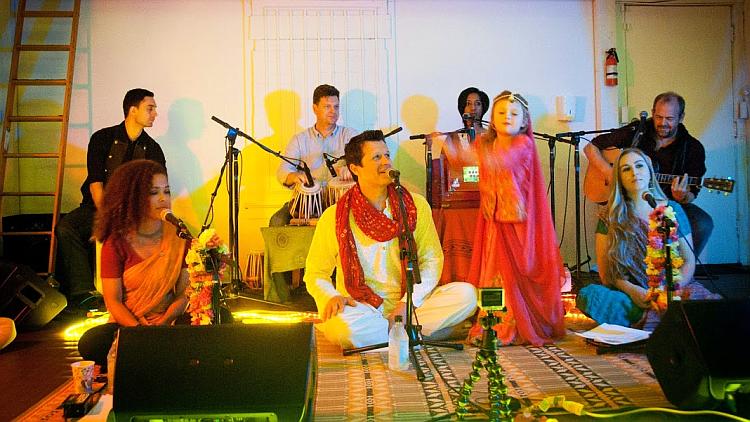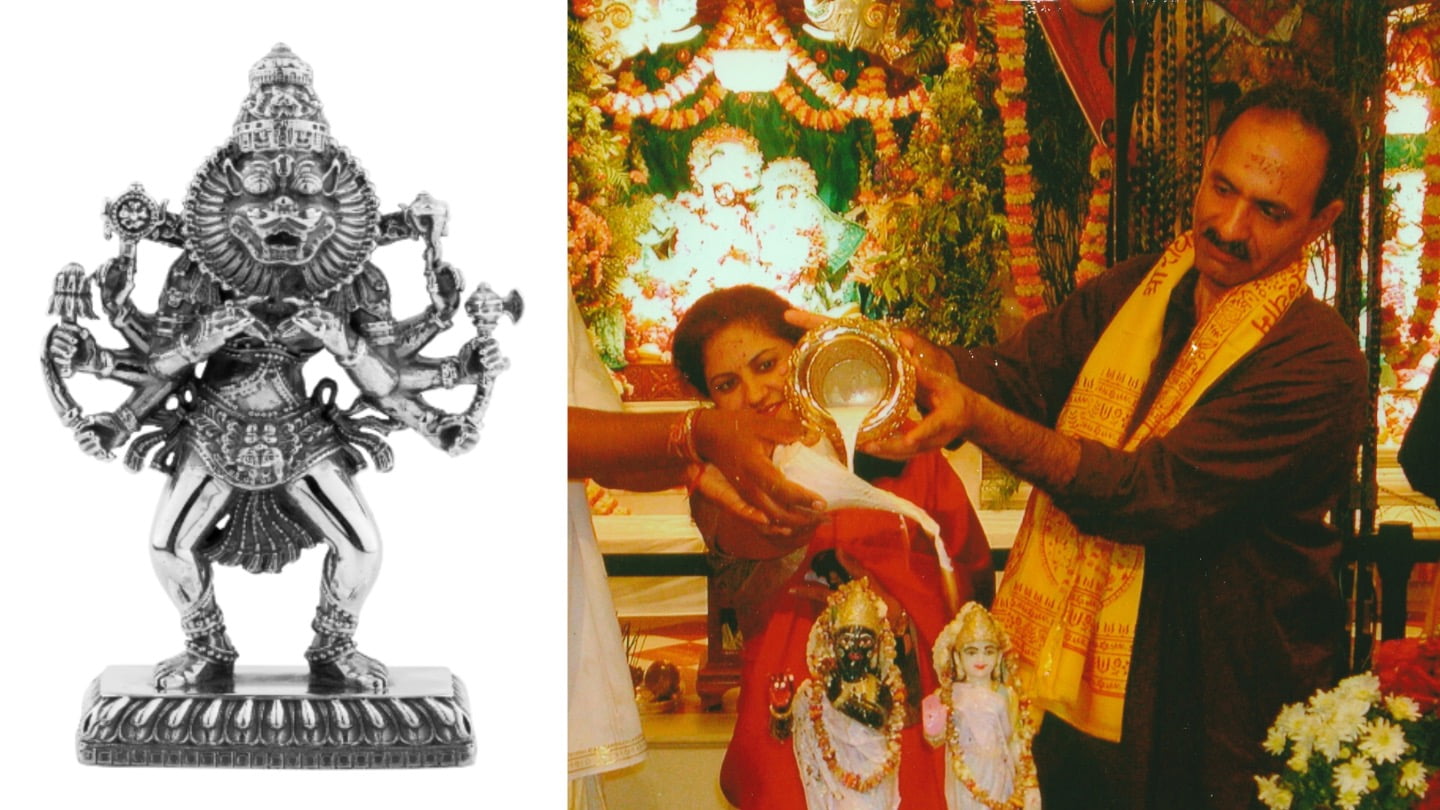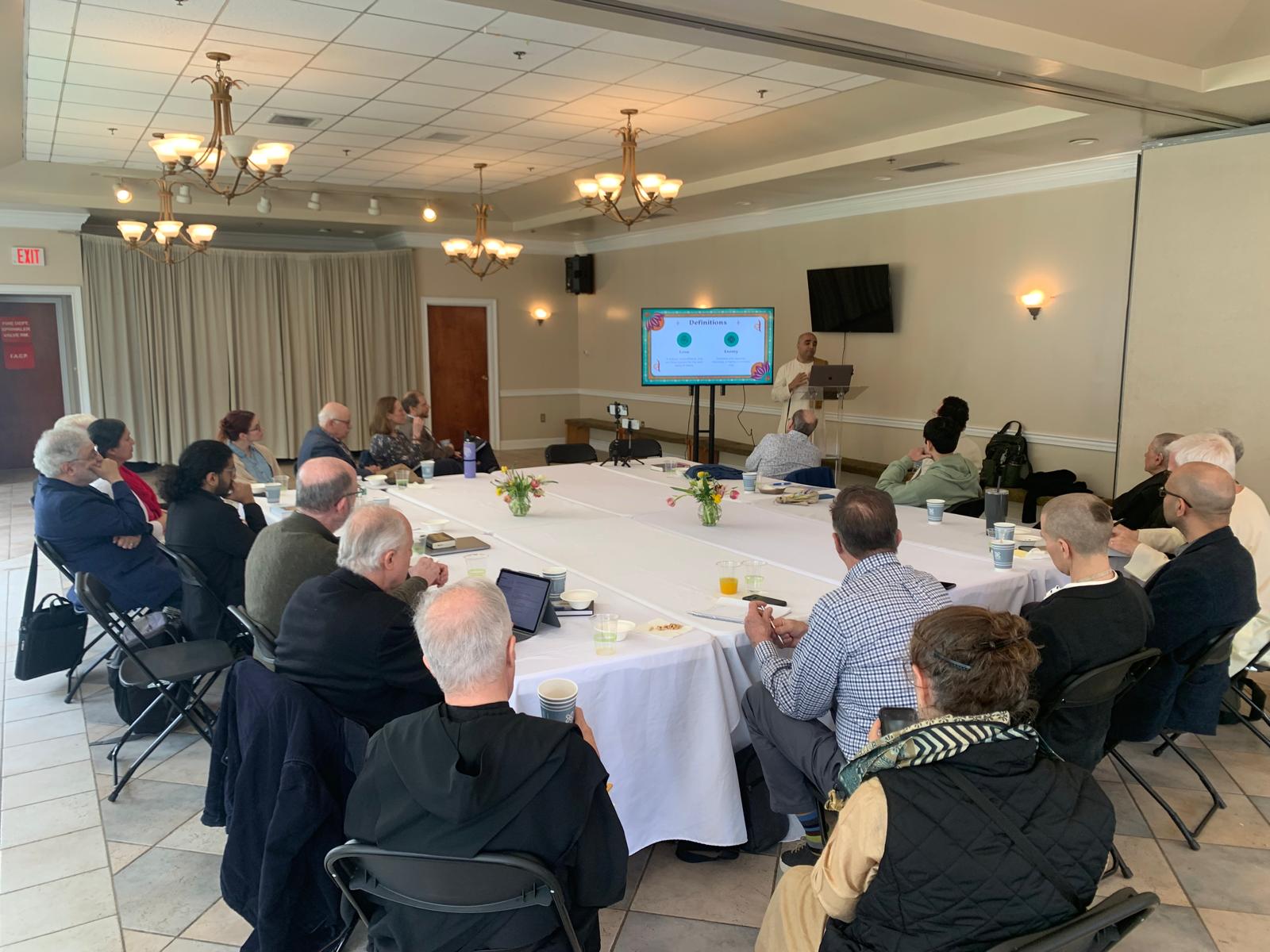Bhakti Without Borders Album to Donate 100% of Profits to Underprivileged Brijabasi Children
By Madhava Smullen | May 14, 2015

When you press play on the first track of “Bhakti Without Borders,” there’s no build up.
The instant you hear that first phrase – “Radhe, Radhe Govinda, Radhe Gopal” – already stuck in listeners’ heads a few days after release – you know this is one of the catchiest kirtan albums you’re likely to hear.
It’s also unique in that neither Madi Das, the second gen ISKCON devotee behind the idea, nor the eleven Vaishnavi singers featured on the album were paid a cent for their work.
Production costs were raised through crowdfunding site Indiegogo, so that 100% of the proceeds from the album could go to Food For Life Vrindavan’s Sandipani Muni Schools.
Based in Lord Krishna’s sacred birthplace, the schools provide free education, uniforms, books, stationary, healthy meals and medical care for around 1,300 underprivileged Brijabasi girls from kindergarten through to twelveth grade.

Brijbasi girls study at Sandipani Muni School
Madi himself spent eleven years at school in Vrindavan, and has a five-year-old daughter, Kaia (who did an impromptu dance dressed up as the Queen of Vrindavana, Srimati Radharani, at the album’s May 9th release concert in Los Angeles). So the schools have always been close to his heart.
He’s put that heart into Bhakti Without Borders, released on May 12th and available on i-Tunes, Amazon, Google Play and Bandcamp.
One of the things you notice first about the album is its immaculate production by well-known kirtan artist Dave Stringer, with a crystal clear stereo sound.
But that’s not Madi’s top priority.
“There’s a certain amount of technique involved in recording good quality sound, but it’s all really about getting the mood, and trying to keep the focus on Krishna,” he says. “So before I’d go to the studio, I’d always go to the temple first, and bring some prasadam for our engineer. We also had each singer say a prayer that [senior devotee] Amala Bhakta Prabhu wrote for Srimati Radharani. Trying to keep that sincerity as the focus was what was really important for me.”
It helps that the album’s eleven female co-vocalists are a mix of legendary kirtaniyas and devoted newcomers from around the world, for whom the Sandipani Muni School cause also means a lot to.

(From top left to bottom right) Carmella Gitanjali Baynie, Chaytanya, Acyuta Gopi, Nalina Kaufman, Jahnavi Harrison, Gaura Mani, Gaurangi, Tulsi Devi, Madi, Sudevi, Mallika Des Fours, and Ananda-Amrita
Powerhouse New York chanter Acyuta Gopi, for instance, was so eager to be a part of the project that although she’s a busy mom, she got on a 6:00am flight from New York to Los Angeles, recorded her song, and flew back at midnight to be with her four-year-old daughter.
The album also features Chaytanya of the Dub Kirtan All Stars; Sudevi, who has toured 26 countries doing kirtan; bestselling New Age artist Gaurangi (Pia) from England, and Gaura Mani of the Vrindavan-based Vrajavadhus band.
They’re joined by Mallika Des Fours from Australia, who sang as part of the Krishna Kids on the 1986 album petitioning Mikhail Gorbachev to release imprisoned Soviet Hare Krishnas; and Jahnavi Harrison, who toured internationally with both Gaura Vani and Sita and the Hanumen.
Meanwhile Carmella Gitanjali Baynie, a well-known singer in the broader kirtan community, is paired with upcoming young voice Ananda-Amrita. And LA-based second generation ISKCON devotees Nalina Kaufman and Tulsi Devi make their debut on a professionally produced album.
“Making the album was really, really enlivening, because each person brought their own special flavor,” says Madi.
Madi’s warm, smooth tones go down easy on Bhakti Without Borders and are the cohesive through-line throughout the album, binding together a series of stunning vocal performances – beginning with Chaytanya’s belter on catchy opener Sri Radhe.
The songs themselves are traditional Vaishnava bhajans with a twist. Some are Madi’s original melodies, such as Sri Radhe and the moving Hare Krishna melody on Maha Mantra, which he composed while doing kirtan with his dearly departed friend Ram Prasad during Ram’s final days.
Others are personal to Madi in different ways. Jamuna Puline, a Bengali song by Bhaktivinode Thakur, was often sung to him by his mother as he grew up. On the album, lifted by Acyuta Gopi’s yearning vocals, it’s likely to raise goosebumps and maybe a few shining eyes too.
Acyuta Gopi delivers a heartfelt vocal on ‘Jamuna Puline’
Some songs are Madi’s versions of temple melodies, while many combine two different prayers to create a kind of devotional “best of.”
Namoh Maha featuring Gaurangi, for instance, incorporates the “Gauranga, Nityananda!” refrain made popular on Indradyumna Swami’s Polish Festival of India tour. Like many of the songs, it’s also flavored by Dave Stringer’s background in folk and bluegrass, with a stop/start folk-funk chorus that shouldn’t be listened to on headphones in public unless you want to get weird looks from passersby for grooving uncontrollably.
The music itself is provided by some of the best musicians on the kirtan scene. There’s Dave Stringer on guitar and Appalachian Dulcimer; Sheela Bringi on harmonium and bansuri flute; Patrick Richey on a variety of ethnic drums such as the tabla, cajon, ghatam, and dumbek; Matt Pszonak on pedal steel; Tulsi Devi on violin; and Madi on kartals and mridanga.
Meanwhile Bhakti Without Borders’ unique immediacy is garnered by making the ten songs 3 to 6 minutes long with the verse-chorus structure of a pop song, rather than the more epic 15 to 20 minute kirtans of many albums in the genre.
The idea, Madi says, is to maximize the commercial appeal of the album so that the maximum amount of funds go to the Sandipani Muni School students in Vrindavan, without selling out the culture.

The Bhakti Without Borders album cover
“I want it to be enjoyed by our friends and family in the devotee community; by people in the broader kirtan community; and even further, by the mainstream — people who listen to World Music,” says Madi. “I’d love it to be able to fit in between Deep Forest and Ali Farka Toure. And there’s a good sign that that’s happening – a couple of weeks ago we were played on the world music Global Village radio station in LA, and it just seamlessly fit right in.”
While Madi is getting interviews with as many publications, radio shows and podcasts as possible, buzz about the album is mostly spreading by word of mouth. There’s no marketing budget, so that all the money from sales go straight to Vrindavan.
And the buzz is spreading fast, with good reason.
“There are two effects to listening to the album,” Madi says. “There’s the immediate, that you’re enjoying music that has a sacred vibration and is benefiting your mind. And then there’s the benefit of taking care of the children of Vrindavan. Because I think that’s service to Krishna. And I think kirtan is supposed to be done as service.”
Listen to previews of the album here: https://soundcloud.com/kirtan-shakti/sets/bhakti-without-borders-preview
Purchase Bhakti Without Borders on Amazon ori-Tunes
The Sri Radhe music video, featuring children from Anapayini’s Bhakti Kalalayam Dance School. Shot and edited by Krishna Sanchez and Hladini Radha Zakheim, with choreography from Anapayini.














